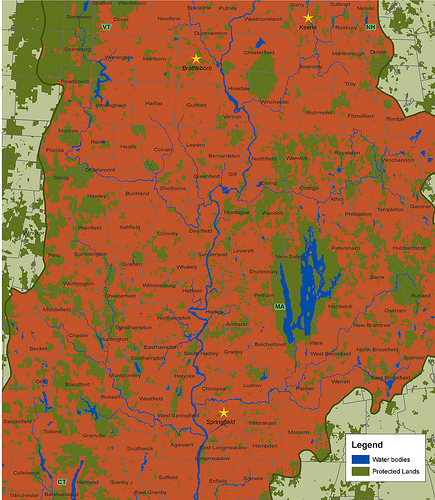With the closing of big box stores in Brattleboro and Hinsdale, local environmentalists consider how to reuse sites in a greener, more economically responsible way
Four years ago, Home Depot opened a store in Brattleboro directly across the street from a locally owned hardware store. A citizens' group called BrattPower quickly formed to call for a boycott of the giant corporate chain. Members of the group stood outside the Home Depot holding "Shop Local" signs and talking to passersby about the importance of keeping their money in the community.
Two weeks ago, the Brattleboro Home Depot closed.
"I feel mixed emotions," said Tim Stevenson, one of the organizers of BrattPower. "People are losing their jobs. On the other hand, when a big box store comes to a town, people usually lose their jobs when small, locally owned stores go out of business."
Both of Brattleboro's locally owned hardware stores survived the Georgia-based chain store's time in town.
It takes about two minutes to drive from downtown Brattleboro to the Wal-Mart across the river in Hinsdale, N. H. The store is much bigger than any business on Brattleboro's Main Street.
But the Arkansas-based Wal-Mart announced recently that it was not big enough. In autumn, the company plans to begin paving a field about five miles down the road in Hinsdale to replace the current store with an even bigger one.
The buildings that house the former Brattleboro Home Depot and the current Hinsdale Wal-Mart will likely be vacant indefinitely. "Home Depot still has plenty of time on their lease for that building. They're trying to find someone to sublease it to," said Dan Wechsler of Gibraltar Management in Tarrytown, N.Y., the owner of the building. He declined to say when the lease will expire.
Local environmentalists are now raising the possibility of converting the two empty big box stores and the acres of parking lot around them into more environmentally friendly uses that won't endanger jobs.
Don Webster of Brattleboro owns a popular downtown restaurant and serves on the board of Smart Growth Vermont, a non-profit in Burlington. "Asphalt can be pulled up," he said of the acres of pavement around the vacant Home Depot building. "But it's up to the community, and the owner of the building, to decide what will happen." Old-timers remember the days when the Brattleboro site was a farm.
In 1999 in Richfield, Ohio, a vacant basketball stadium and its acres of parking lots were demolished and turned into a wilderness park.
The Brattleboro Home Depot site is close to a freeway exit, and is already connected to water, sewer and power lines. So a more likely scenario for the vacant building and parking lot is the creation of a neighborhood like downtown Amherst or Brattleboro.
In Mashpee on Cape Cod, a vacant supermarket and its acres of parking lots were replaced with narrow streets with sidewalks, stores and offices with apartments above them, and small parks. Striking before (www.walkablestreets.com/mash.htm) and after (www.mashpeecommons.com) photos are available on the internet. The Mashpee project was completed in 2002.
Around the nation, at least 10 similar projects have been completed. Another is now underway in Lakewood, Colo. on the site of a vacant 106-acre shopping mall.
Paul Cameron is director of Brattleboro Climate Protection, an organization that works to reduce the town's energy use and has received support from the selectboard. "We are working on improving train service up and down the Connecticut River valley," Cameron said. "If homes are built at the old Wal-Mart site, people will easily be able to walk from there to the Brattleboro train station."
The soon-to-be-vacant Wal-Mart is a stone's throw from the Connecticut River. Immediately behind the building is the trailhead for Mount Wantastiquet State Park, one of the most popular hikes in the area.
Between 1960 and 2000, the number of houses and apartments in Windham County, which includes Brattleboro, more than doubled to reach 27,000. Most of the new construction was done in remote rural areas. Between 1982 and 2000, the Connecticut River valley lost 27 percent of its farmland, according to a report by the Trust for Public Land.
Groups like the Vermont Land Trust have protected significant swaths of farm and forest land, but they have not kept pace with the developers.
In 2006, the town of Brattleboro approved a long-term plan for the area around the Home Depot building. It called for the kinds of changes that happened in Mashpee. But Cameron said the plan won't come to fruition unless people actively support it. "If enough people speak out and say they want it, that will make it happen," he said.
-----------
Map by the Trust for Public Land, 2006. This map shows the Pioneer Valley section of the Connecticut River watershed. Land outside the watershed is light green, meaning streams in that area do not flow to the Connecticut River. Dark green land has been protected from development. Red land is vulnerable to being paved with McMansions, Wal-Marts, parking lots, roads, and ChemLawns. Click on the map to enlarge.

Post new comment